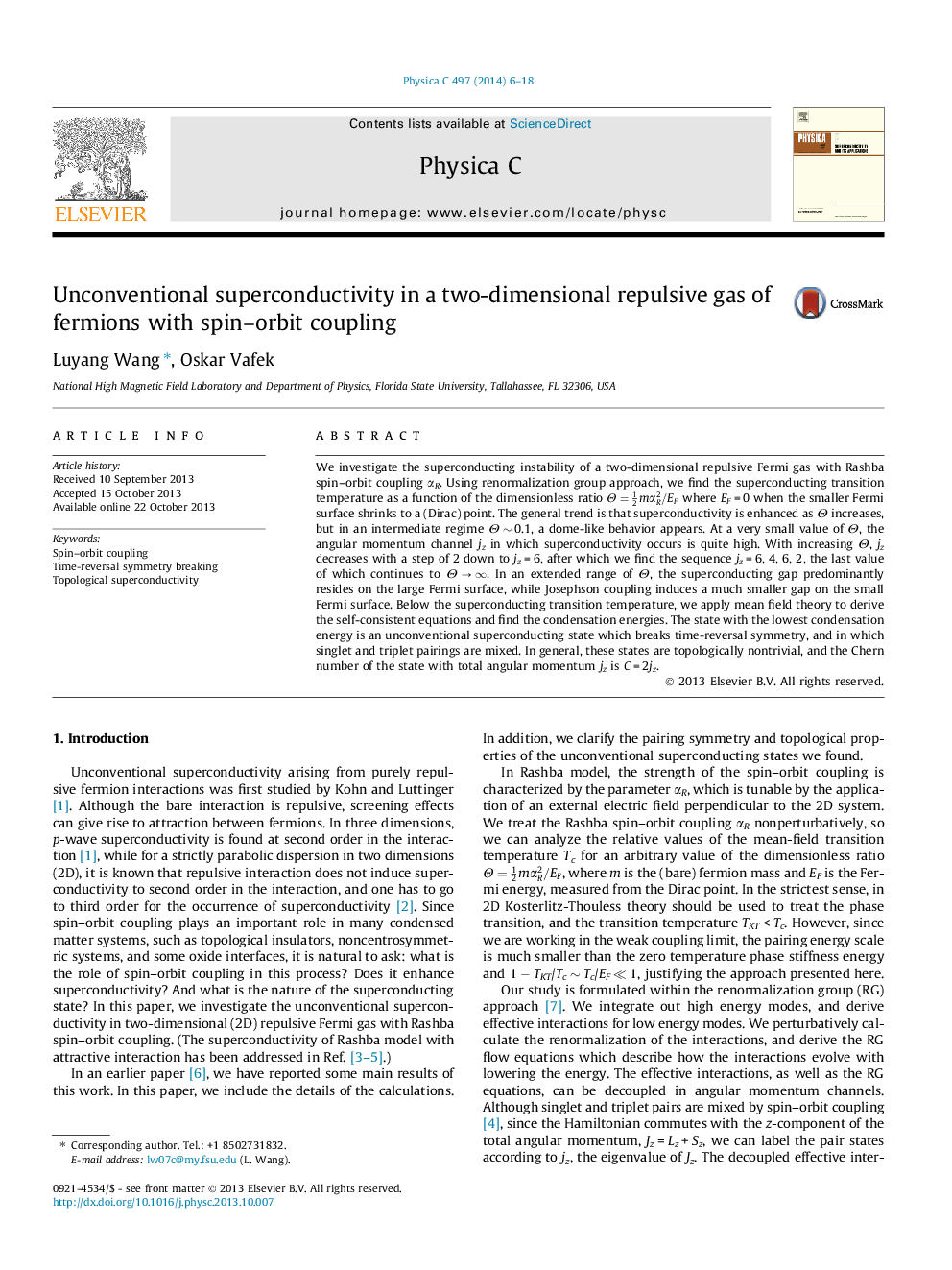| Article ID | Journal | Published Year | Pages | File Type |
|---|---|---|---|---|
| 8164633 | Physica C: Superconductivity and its Applications | 2014 | 13 Pages |
Abstract
We investigate the superconducting instability of a two-dimensional repulsive Fermi gas with Rashba spin-orbit coupling αR. Using renormalization group approach, we find the superconducting transition temperature as a function of the dimensionless ratio Î=12mαR2/EF where EF = 0 when the smaller Fermi surface shrinks to a (Dirac) point. The general trend is that superconductivity is enhanced as Î increases, but in an intermediate regime Πâ¼Â 0.1, a dome-like behavior appears. At a very small value of Î, the angular momentum channel jz in which superconductivity occurs is quite high. With increasing Î, jz decreases with a step of 2 down to jz = 6, after which we find the sequence jz = 6, 4, 6, 2, the last value of which continues to Πâ â. In an extended range of Î, the superconducting gap predominantly resides on the large Fermi surface, while Josephson coupling induces a much smaller gap on the small Fermi surface. Below the superconducting transition temperature, we apply mean field theory to derive the self-consistent equations and find the condensation energies. The state with the lowest condensation energy is an unconventional superconducting state which breaks time-reversal symmetry, and in which singlet and triplet pairings are mixed. In general, these states are topologically nontrivial, and the Chern number of the state with total angular momentum jz is C = 2jz.
Related Topics
Physical Sciences and Engineering
Physics and Astronomy
Condensed Matter Physics
Authors
Luyang Wang, Oskar Vafek,
